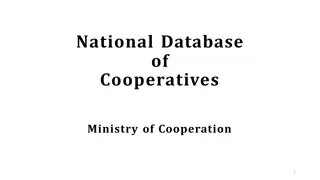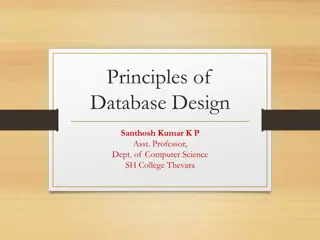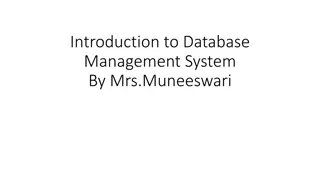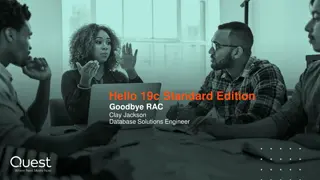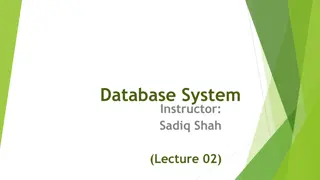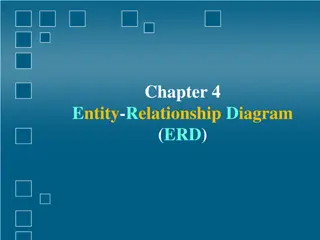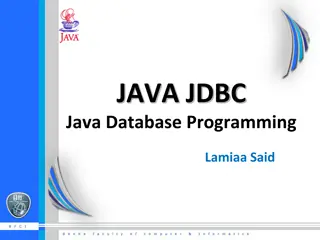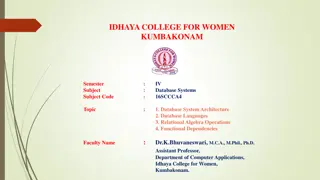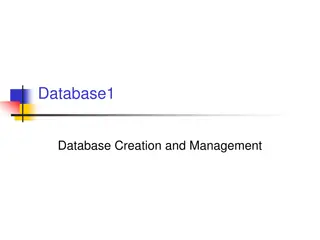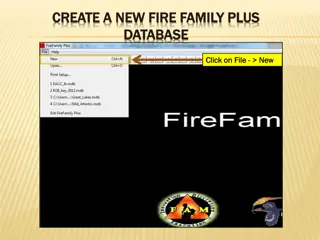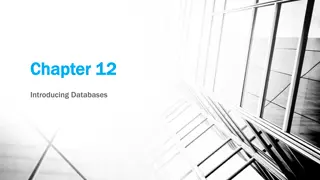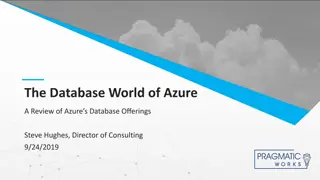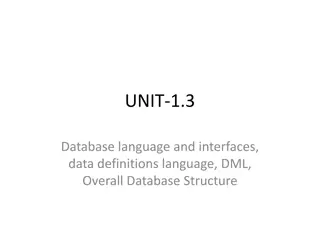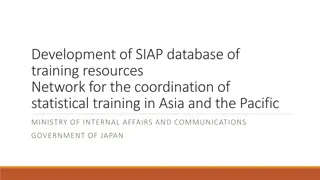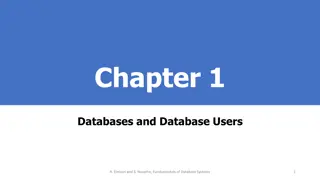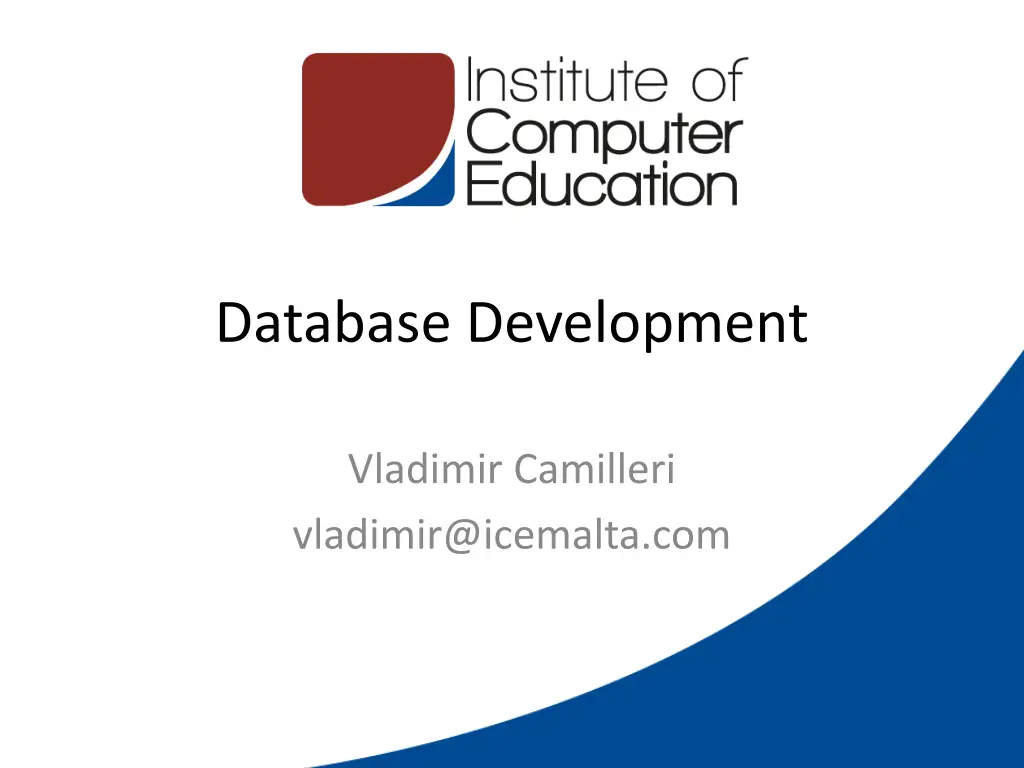
Database Essentials: Understanding Databases, DBMS, and SQL
Explore the fundamentals of databases, including different types, DBMS, SQL, and basic SQL features. Learn how databases are utilized for storing and managing information, and discover the crucial role they play in various software applications and systems like Facebook, YouTube, and Gmail.
Download Presentation

Please find below an Image/Link to download the presentation.
The content on the website is provided AS IS for your information and personal use only. It may not be sold, licensed, or shared on other websites without obtaining consent from the author. If you encounter any issues during the download, it is possible that the publisher has removed the file from their server.
You are allowed to download the files provided on this website for personal or commercial use, subject to the condition that they are used lawfully. All files are the property of their respective owners.
The content on the website is provided AS IS for your information and personal use only. It may not be sold, licensed, or shared on other websites without obtaining consent from the author.
E N D
Presentation Transcript
Database Development Vladimir Camilleri vladimir@icemalta.com
Course Outline Databases Overview Data Definition Language (DDL) Working with queries Retrieving Data Modifying data in a table Using SQL functions in queries Working with multi-table queries (Joins) Implementing data integrity Using databases for software applications
What is a database? An organized collection of data Designed according to the business use Independent of technology A database consists of: Tables Columns (Every Column has an attribute) Rows
What is a database used for? Storing Information Providing Information for multiple users Easy Access to Data Secure Data Management Almost every system uses a database: Facebook You tube Gmail
Types of Databases Relational Databases Object Oriented Databases Cloud Databases Data Warehouse Distributed Databases Embedded Databases Spatial Databases
What is a DBMS? Database Management System A software that allows users to: Create a database (DDL) Maintain a database (DDL) Query a database (DML) Improve database performance Adjust database security Data Administration
Different Vendor DBMS Microsoft SQL Server Oracle MySQL IBM DB2 Sybase PostgreSQL SQLite
What is SQL? Structured Query Language A programming language designed for managing data in a RDBMS Queries Data manipulation Language (DML) Data Definition Language (DDL) Data Control Language (DCL)
Basic SQL Features The SELECT command The INSERT command The UPDATE command The DELETE command The CREATE/ALTER/DROP table commands
Basic Data Types Character Strings Char(n) and Varchar(n) Bit (Yes/No) Date and Time Date/Time/DateTime Numbers Integer/Decimal/Numeric/Float
Next Lecture Creating a database Creating tables Table attributes and properties Introduction to Querying tables using SQL Introduction to the SELECT command

